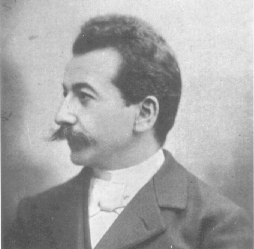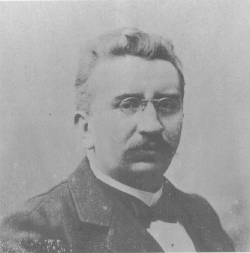
Auguste and Louis Lumière
ibid., center photograph pages.

The apparatus devised by Messieurs Lumière will be of considerable assistance to the photographic study of motion. Not only does it enable us to capture movement in its various stages, but we can recompose it at will, since the crank is hand-operated. Motions can be slow, very slow if we wish, so that no detail escapes our attention; and then, subsequently, we can accelerate it, should we so desire, back to normal speed. We shall then possess absolutely perfect reproduction of real movement.
Louis Lumière, The Cinematograph, La Nature, 12 October 1895. In Auguste and Louis Lumière. (Jacques Rittaud-Hutinet, ed.) Letters. London: Faber and Faber, 1995. p.302.
The Lumière Brothers
The Lumière camera was a machine for both film projection and development. Not only could the camera perform two tasks in one box, but the box was small - weighing 12 pounds, much lighter than its rather crude rival, the Kinetoscope, invented by William Kennedy Laurie Dickson.
The Lumières and film making
Now that the first real film camera was in use, it was up to its pioneers to use it. The first experimentation by Louis Lumière showed everyday real events. His film The Arrival of a Train at the Station (1895) showed the train coming in diagonally across the screen, a very unconventional method of framing.
Therefore, the Lumières pioneered not just the technicalattributes of the camera but also its artistic attributes, creating a dialogue of REALISM that has always been a crux of cinema as distinct from it's twin the Melies influenced fiction - phantasmic film tradition.